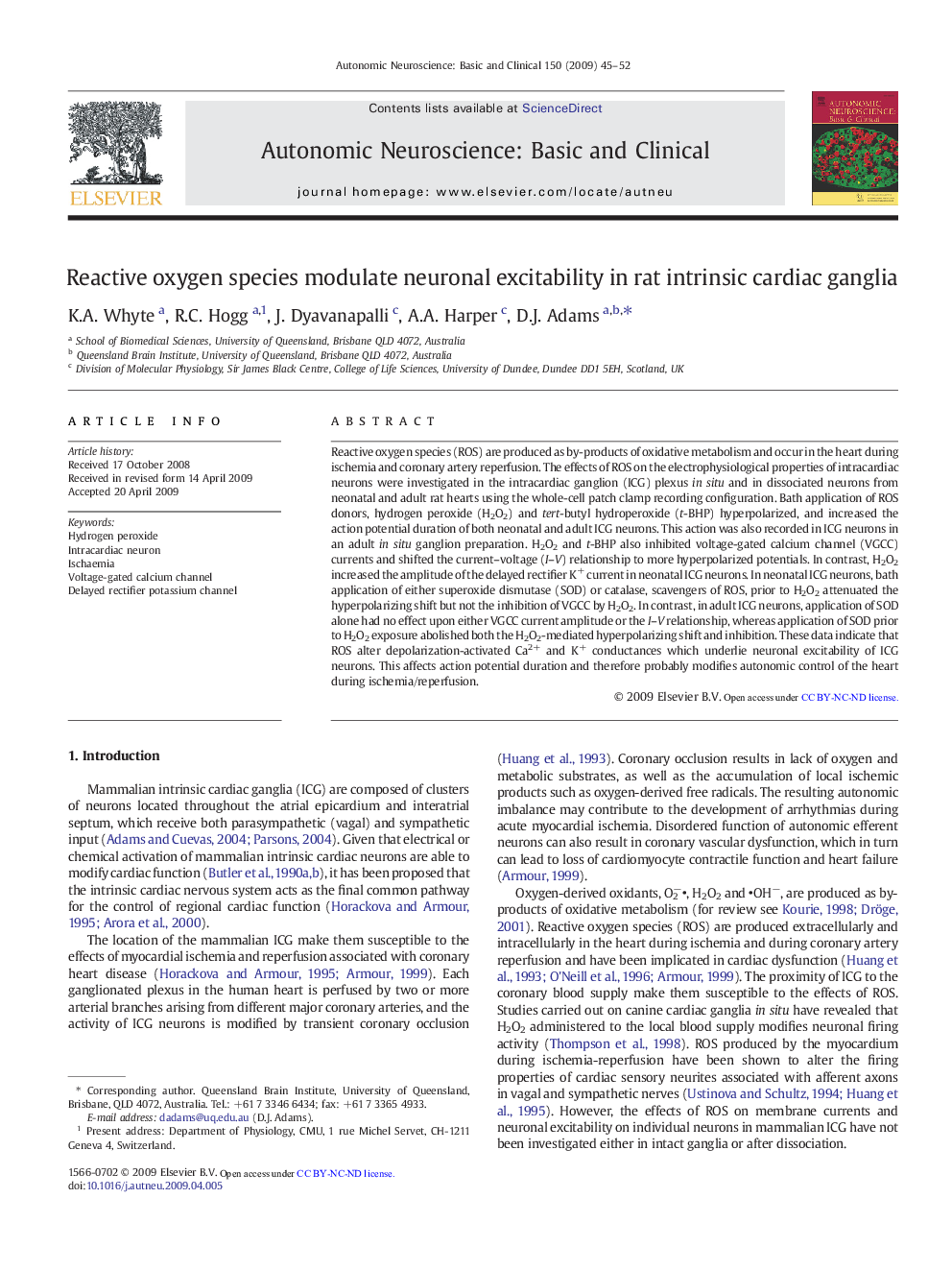| کد مقاله | کد نشریه | سال انتشار | مقاله انگلیسی | نسخه تمام متن |
|---|---|---|---|---|
| 6004756 | 1579561 | 2009 | 8 صفحه PDF | دانلود رایگان |

Reactive oxygen species (ROS) are produced as by-products of oxidative metabolism and occur in the heart during ischemia and coronary artery reperfusion. The effects of ROS on the electrophysiological properties of intracardiac neurons were investigated in the intracardiac ganglion (ICG) plexus in situ and in dissociated neurons from neonatal and adult rat hearts using the whole-cell patch clamp recording configuration. Bath application of ROS donors, hydrogen peroxide (H2O2) and tert-butyl hydroperoxide (t-BHP) hyperpolarized, and increased the action potential duration of both neonatal and adult ICG neurons. This action was also recorded in ICG neurons in an adult in situ ganglion preparation. H2O2 and t-BHP also inhibited voltage-gated calcium channel (VGCC) currents and shifted the current-voltage (I-V) relationship to more hyperpolarized potentials. In contrast, H2O2 increased the amplitude of the delayed rectifier K+ current in neonatal ICG neurons. In neonatal ICG neurons, bath application of either superoxide dismutase (SOD) or catalase, scavengers of ROS, prior to H2O2 attenuated the hyperpolarizing shift but not the inhibition of VGCC by H2O2. In contrast, in adult ICG neurons, application of SOD alone had no effect upon either VGCC current amplitude or the I-V relationship, whereas application of SOD prior to H2O2 exposure abolished both the H2O2-mediated hyperpolarizing shift and inhibition. These data indicate that ROS alter depolarization-activated Ca2+ and K+ conductances which underlie neuronal excitability of ICG neurons. This affects action potential duration and therefore probably modifies autonomic control of the heart during ischemia/reperfusion.
Journal: Autonomic Neuroscience - Volume 150, Issues 1â2, 5 October 2009, Pages 45-52